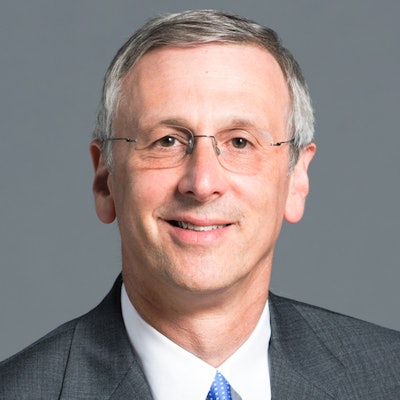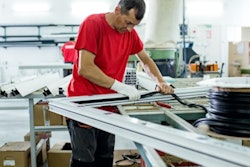
New York University (NYU) Langone Health is "bursting at the seams" with patients with COVID-19. Doctors on the floors are trying to manage the overwhelming demand but, too often, keeping a patient's family informed about their loved one's status fell through the cracks -- until the radiologists stepped in.
While the radiology department has experienced a drastic drop in patient volume due to the canceling of routine screenings and elective procedures, their peers in intensive care, emergency, and the hospital floors have been tasked with the "impossible," according to radiologists at the institution.
Radiologists looking for a way to help realized they could ease their colleagues' burdens by taking charge of some of the communication responsibilities.
"The way I like to describe it is almost a survivor's guilt," Dr. Myles Taffel, an abdominal imaging specialist at NYU, told AuntMinnie.com. "I'm 15 years out from internship, and I would be lost on the floor. We were just looking for somewhere to give back."
Radiology Department Chair Dr. Michael Recht tasked Taffel and a few other radiologists with building NYU Family Connect, a program in which radiologists serve as information liaisons for families with a loved one in the hospital. Since the hospital isn't allowing visitors, the 67 volunteer radiologists serve as a vital resource to deliver crucial patient updates.
 Dr. Michael Recht.
Dr. Michael Recht.Through the program, radiologists and medical students are assigned a floor of the hospital to "cover" virtually. Four radiologists lead the communication effort for about 34 patients with COVID-19, the same number of patients a corresponding attending physician sees.
The radiologists review the charts of their patients so that they know oxygen levels, medications, and comorbidities, as well as if a patient is on an experimental treatment. They listen to the rounds and ask questions if needed.
"I'll have a quick debrief with my medical student," Taffel said. "Then we'll start calling patients' families."
The families are often just happy to hear from someone, although the radiologists can't answer every question that comes their way. Too often, the answer to tough questions about the impact of the novel coronavirus is simply, "We don't know."
The task is demanding, but the radiologists who have signed up for NYU Family Connect are resilient. Often, they find the experience meaningful, particularly when they feel their skillset isn't suited to help on the floors.
"We still had 60 radiologists sign up knowing that they were going to be on the clock from 8 to 6, seven days a week, until whenever they were needed," Taffel said. "Nobody changed their mind."
On the floors
NYU Family Connect is only one of many programs that Recht has established to keep the department nimble during the surge of COVID-19 patients. Recht, who has experience improving radiology processes, has taken that analytical approach to find ways to best use the roughly 230 faculty members at his institution.
There are radiologists, particularly thoracic imaging experts, who are on the front lines providing essential care. Chest radiographs have served as the primary imaging modality for patients at the hospital, whereas CT is being reserved for patients with a very specific need, such as pneumonia with edema or sepsis.
The front-line radiologists and their teams have created dedicated x-ray units in the emergency department and on the floors to limit the movement of patients. Recht also established a bedside interventional team, in which interventional radiologists go to the floors, place central lines, and perform other tasks that don't require moving patients.
"That's been something that's been incredibly well received by intensivists and our hospitalists because they're so busy doing other things," Recht said.
Half of the radiology residents and a few radiologists have also volunteered to serve on the floor with the physicians, although not everyone has been redeployed. NYU Langone Health has also created a contingent of doctors entirely dedicated to supporting their peers with direct patient contact.
For radiologists who don't feel comfortable helping on the floor, Recht has found other ways to put them to use. Some faculty are working on projects to educate medical students and residents, particularly now that outpatient procedures are at a halt. Others are working on plans for what to expect when services eventually resume.
"I think until we have a vaccine or an effective antiviral medication, we're still going to be practicing some form of a social distance," Recht said. "So the questions are: What is the waiting room of the future going to look like? What are our schedules going to look like? How are we going to be reading? Where are we going to be reading? What are our reading rooms gonna look like?"
Lessons from the epicenter
Recht took a number of steps to prepare for the pandemic, which all now appear to be critical. Some of these steps included preparing radiologists to read from home and ensuring the IT department could handle the bandwidth.
"If you haven't had the surge yet, you should really be prepared," he said. "Look at how you're going to run the department. What are the functions you can do?"
When it comes to addressing a pandemic head-on, Recht said communication is key. He keeps the department informed with daily updates as well as virtual town halls and frequent meetings.
He also emphasized the importance of letting everyone in the department know how much their work is appreciated, especially at a time when just showing up to work is taking a health risk.
Other radiologists emphasized the importance of flexibility, stressing that the situation can change overnight during a pandemic.
"Things are going to change, and they're going to change incredibly rapidly," Taffel said. "Being willing and able to pivot when the time is appropriate and predict when that's going to happen is of paramount importance."
But despite the hurdles and new roles, one thing emerged from radiologists at the epicenter -- an overwhelming sense of gratitude. Gratitude to each other, to the medical students, to their families, and to the radiology staff members who are often the "unsung heroes" of the department. Gratitude for the opportunity to do something meaningful amid tragedy.
"I am grateful to be able to make a difference in the lives of patients' loved ones who are sheltering at home without much access to medical information," one radiologist wrote in a letter to Recht. "Thank you for the opportunity to serve at this more difficult and trying time."




















